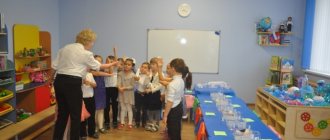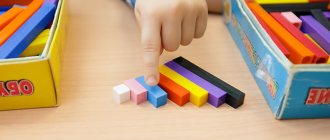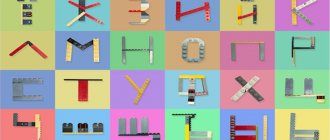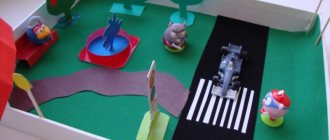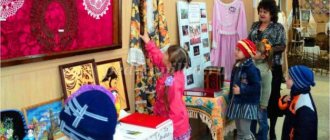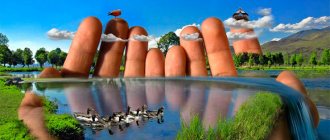reference Information
Documents • Laws • Notices • Document approvals • Contracts • Requests for proposals • Technical specifications • Development plans • Document management • Analytics • Events • Competitions • Results • City administrations • Orders • Contracts • Work execution • Protocols for consideration of applications • Auctions • Projects • Protocols • Budgetary organizations Municipalities • Districts • Education • Programs Reports
: • by references • Documentary base • Securities
Regulations
: • Financial documents
Resolutions
: • Categories by topic • Finance • cities of the Russian Federation • regions • by exact dates Regulations
Terms
: • Scientific terminology • Financial • Economic
Time
: • Dates • 2015 • 2016 Documents in the financial sector • in the investment sector • Financial documents - programs
A series of instructions for parents on life safety; methodological development on life safety (senior group) on the topic
Memo for parents
Teach the children
safe riding
on skates!
Dear parents!
Have you decided to put your child on skates?
3-5 years is the most suitable age for mastering skating techniques.
Ice skating is:
- training for the cardiovascular and respiratory systems;
- improving coordination of movements and functioning of the digestive organs;
- increased performance and mood;
- normalization of sleep;
- strengthening the immune system;
- A wonderful and varied holiday for the whole family: games on ice, skating alone, in pairs, threes, on a train.
Where to begin?
The first two or three classes should take place at home. You need to put covers on your skates and teach your child to confidently stand on skates, walk, squat, and do simple exercises. Move around the room, turn in different directions. And most importantly, you need to learn how to stand: your legs are bent, your body is tilted forward, your arms are bent at the elbows and spread to the sides.
Now you can go out into the air, onto the compacted snow. You need to put on skates, walk around in them, do bends, squats and even jump.
These exercises promote greater stability on the ice and prepare your child for the upcoming skating!
To the rink!
It is preferable to start at a street skating rink near your home, because the main point of activities at this age is a walk and active movement in the frosty air!
Start getting acquainted with ice with the simplest elements:
- walking sideways with an extended step from one to the other edge of the site;
- walking forward on straight legs, lifting them off the ice;
- squats in place (“spring”).
Teach children how to fall and stand up on their own!
It is unacceptable for them to fall backwards; it is better to land on their side or forward, “fish-like,” and do it as softly as possible.
Keep an eye on your shoe lacing!
It is very important to lace them correctly: the toes are loose, the instep is cinched tight, the top of the boot is laced looser. Do not wrap the laces around the edge of the shoe! It's better to tie two bows. Have a conversation with your child about the consequences of lacing skates incorrectly.
Do not allow children to sit on ice, snow, or asphalt!
You can only rest on benches.
When the child is sufficiently familiar with the ice and begins to walk confidently, you can invite him to slide for a longer time on one leg or push off and skate on both legs at once.
If this is still difficult, let him feel the sliding - carry him in tow. You move on the ice, first facing the child, back forward, and he holds on to the stick, ski pole or rope you extended. At the same time, his legs are shoulder-width apart and slightly bent, his back is straight and slightly tilted forward. It is important that the child maintains balance himself, so some object is used for tug, and not your hands, on which the child can simply hang.
The further training program depends on your skills - you can show your child some elements of skating (“flashlight”, “herringbone”, “pistol”, etc.), you can simply skate in a race, you can watch other children and adults at the skating rink , adopt movements from them.
Equipment
The best place to start skating is on figure skates. Nowadays skate boots are made of plastic, but for children it is advisable to buy leather ones, and in order to prevent the feet from freezing, you can put on special insulating covers on top.
Do not buy skates for growth, this can lead to injury.
When choosing skates, you should not save money, since learning to skate well is only possible on high-quality, practical and comfortable skates with leather soles and instep supports.
Skates must be sharpened well and in a timely manner, otherwise frequent falls, muscle and ligament strains are possible.
With skates that have already been used, you need to be careful: the “ankle” of the boot must be hard! This is especially important for children with weak ankle joints.
Boots must be worn with a woolen sock. If they are too big, you can put thick insoles in them or wear another pair of socks.
Do not wear a hat that blocks the child’s view or long scarves; this is dangerous on the skating rink. A cool, windproof jacket, wool hat, waterproof pants and waterproof gloves or mittens are best!
Remember
that during skating lessons
children have rights
and they have the right to demand their compliance!
- The right to warmth and comfort. In addition to the fact that children's clothing should be multi-layered, it is necessary to ensure easy access to its upper layers. There should be enough hot tea in your thermos, and gingerbread and cookies in your pockets.
- The right to respect. Listen to your children and take their words seriously.
- Right to safety. Try to eliminate all possible dangerous situations.
- The right not to feel bored or tired. Too much exercise is unlikely to bring much pleasure to children. There is no better way to instill in them an aversion to skating than to force them to do it when they no longer want to.
- The right not to feel coerced. Children hate being forced to do anything. Their skating experience will be more enjoyable if they have the ability to start or stop as they please.
Safe riding!
Education and science
Science
: Tests • Scientific and technological progress • Pedagogy • Work programs • Faculties • Methodological recommendations • School • Vocational education • Student motivation
Subjects
: Biology • Geography • Geology • History • Literature • Literary genres • Literary characters • Mathematics • Medicine • Music • Law • Housing Law • Land Law • Criminal Law • Codes • Psychology (Logic) • Russian Language • Sociology • Physics • Philology • Philosophy • Chemistry • Jurisprudence
Business and finance
Business
: • Banks • Wealth and prosperity • Corruption • (Crime) • Marketing • Management • Investments • Securities: • Management • Open Joint Stock Companies • Projects • Documents • Securities - control • Securities - valuations • Bonds • Debts • Currency • Real estate • (Rent) • Professions • Work • Trade • Services • Finance • Insurance • Budget • Financial services • Loans • Companies • State enterprises • Economics • Macroeconomics • Microeconomics • Taxes • Audit Industry
:
• Metallurgy • Oil • Agriculture • Energy
Construction
• Architecture • Interior • Floors and ceilings • Construction process • Building materials • Thermal insulation • Exterior • Organization and production management
Photo blogs
Art
• Children's creativity • Paintings • Art • Congratulations • Film review • Musical world • Russian rock
World
• People of the world • The world around us • My homeland is the USSR • Nature Channel • Stones and minerals • Cooking, food • Construction and architecture • Under construction • Transport • Weapons • Military transport
beauty
• Fashion Pandia.ru • Girls and Girls
School
• Tests for the Unified State Exam • Solver books • Unified State Examination • 10th and 11th grades • Various textbooks • 4th grade • Russian language grades 5-9 • 5th grade • 6th grade • 7th grade • 8th grade
Wisdom
• Cliparts • Quotes
Author Directory (private accounts)
AutoAuto service • Auto parts • Products for auto • Auto repair centers • Auto accessories • auto parts for foreign cars • Body repair • Auto repair and maintenance • Car chassis repair • Auto chemicals • oils • technical centers • Gasoline engine repair • auto electrical repair • Automatic transmission repair • Tire fitting BusinessAutomation of business processes • Online stores • Construction • Telephone communications • Wholesale companies LeisureLeisure • Entertainment • Creativity • Catering • Restaurants • Bars • Cafes • Coffee shops • Night clubs • Literature TechnologiesAutomation of production processes • Internet • Internet providers • Communications • Information technologies • IT companies • WEB studios • Website promotion • Software sales • Switching equipment • IP telephony | InfrastructureCity • Authority • District administrations • Courts • Utilities • Teen clubs • Public organizations • City information sites The sciencePedagogy • Education • Schools • Training • Teachers GoodsTrading companies • Trade and service companies • Mobile phones • Accessories for mobile phones • Navigation equipment |
Plan of work with parents on life safety senior preschool age (6-7 years) Forms of work
Transcript
1 Plan of work with parents on life safety senior preschool age (6-7 years) Name of the section of the program “Safety” Child and other people Forms of work September Conversation with parents: “If your children are in danger.” Memo for parents on the prevention of extremism and terrorism. Update information on the “Prevention of Terrorism” stand. Exhibition of crafts made from natural and waste materials (Training for cooperation between parents and children). Practical part “Letter to a policeman.” Promotion “Driver! Save my life! Recommendations: “Developing skills to communicate safely with strangers.” Playing out various problem situations. Recommendations: “Developing skills to communicate safely with strangers.” Relay race together with parents: “Cheerful athletes.” Consultation: “Fire safety for preschool children.” Excursion to the traffic police department together with parents. Health Day on the topic: “For health in kindergarten.” Consultation: “Child and telephone.” October
2 Child and Nature A series of recommendations for parents on how to reinforce the material they have covered with their children. Conversations with parents about the need for vaccination against influenza and ARVI. Ecological leisure “Take care of living things.” Exhibition of drawings on traffic rules and fire safety. Child at home Consultation: “Caution, thin ice.” November Questioning of parents “Safety rules at home.” Exhibition of literature on the topic “Safety of your child.” Wall newspaper: “Health is more valuable than wealth.” Selection of material, didactic games on the topic “Dangers in everyday life.” Conversation: “When edible things are poisonous” - pay attention to poisoning, their causes and consequences. Provide information about the unsuitability of food products for consumption, about poisonous berries and mushrooms. Talk about first aid. Drawing competition between a parent and a child on the theme: “I am growing healthy.” Consultation: “Wild Pets”. Consultation: “Rules for using the elevator.” Photo reviews "Ideas for a playground." Consultation “Teaching children to live safely.” Folder-moving “Emergencies”. Preventive consultations “Child alone at home.” Joint creative competition “Dangerous Bird Fire”.
3 Creative competition “Save the Earth from fires!” Consultation: “Child and electrical appliances.” Design of stands and moving folders: “If there is a fire in the house.” Excursion to the fire station with parents. Participation of parents in the creative exhibition “Fire Friend or Foe?” A selection of articles from magazines: “Home Alone.” Exhibition of manuals and educational games: “Don’t play with fire.” December Individual conversations “Rules of conduct in extreme situations.” Health Day on the theme: “To be healthy, everything is healthy.” Consultation “General safety rules”. Reminder: “Safety in your home.” Mobile folder for parents. Topic: “Help children remember fire safety rules.” January Child's health An hour of family meetings at the site (on holidays). Construction of winter buildings and playing around. Fun together with parents: “Dad, Mom, I am a friendly family.” Parent meeting: “A healthy mind in a healthy body” with elements of competition. Consultation: “How to protect your child from injury.” Consultation: “Road injuries, how to avoid them?”
4 Conversation with parents: “If your children are in danger.” February Games on the way to kindergarten. Parents' meeting "Taking care of health from childhood." Reading competition with parents about safety. Questionnaire “Vitamins and a healthy body.” Exhibition of children's works "Our friends - vitamins". Emotional well-being of the child Photo report “How we take care of health” together with parents. We share family experiences. March Consultation: “Child on the playground. How to teach a child to communicate." Conversation: “Services “01”, “02”, “03” are always on guard.” Consultation: “Cultivating friendships in the game.” Consultation: “Winter injuries.” Wall newspaper: “Take care of your health.” Sports festival on the street together with parents “We welcome spring, fill the body with health.” Child on the street April Health Day on the topic: “In the country of Neboleyka.”
5 Exhibition of handicrafts of joint creativity of children and parents “Safety is most important.” An excursion to the nearest intersection together with parents: “All children need to know how to walk along the street.” Fun with parents: “The earth is our home, we live in it.” Project "Olympic Hope". Information in parent corners, moving folders: “What is terror.” Consultation: “Rules of conduct on city streets.” Creative task “Stories from the street”. May Joint work of children and parents to make attributes for the traffic corner. Drawing competition: “Merry Street”. Consultation: “Road alphabet and spatial orientation.” Fun with parents: “Once, once the fire goes out.” Visual information "Study of the responsibilities of passengers and pedestrians." Collaborative work between parents and children “Make a plan for your yard.” Visit by children and parents to AUTO TOWN. A joint thematic exhibition of crafts and drawings with parents “My Street”.
